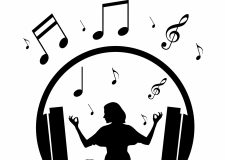See the light: Seasonal Affective Disorder

Zara Baker looks at the symptoms of Seasonal Affective Disorder & effective treatments
Experiencing the winter blues? It’s more common than you think. Do you recall that brief moment last summer when the sun stayed strong, the temperature soaring? It put a spring in our step whether we were stuck in the office or out on the beach. Sunshine equals happiness. But unfortunately for us, sunlight is a rare occurrence here in the UK during winter – even over in Eastbourne – the ‘Sunshine Coast’ – where there is more most daylight hours than anywhere else in the UK. It’s depressing when you watch the weather forecast on TV and heavy cloud cover sits over our small island, leaving brilliant sunshine elsewhere. But what can we do? Cheering up is definitely in order.
For some of us, the long, dark months between September and April (December to February in particular) can make us feel severely low. If you notice a pattern in your mood with the changing seasons then you may suffer from Seasonal Affective Disorder (SAD), a severe case of the winter blues that affects around seven per cent of the UK population and is commonly undiagnosed.
Recognising symptoms
The Seasonal Affective Disorder Association (SADA) says a diagnosis can be made after three or more consecutive winters of the following symptoms: depression, difficulty sleeping, feeling lethargic, difficulty concentrating, over eating, anxiety and loss of libido. If these symptoms fade away in spring, then it is likely to be SAD. Seasonal depression can leave you feeling incredibly low compared to ‘normal’ sadness. Negative thoughts, sleeping more, craving carbohydrates and sweet foods, along with difficulty in concentrating are the norm. Sufferers find it harder to socialise, becoming easily irritable and often feel anxious, as stress is harder to deal with.?As mentioned above, if there are patterns in symptoms re-emerging every winter then SAD is probably the cause.
A milder version of SAD can also occur: subsyndromal SAD includes symptoms such as tiredness and over eating but anxiety and depression are absent or very mild. It is thought that a further 17 per cent of people in the UK suffer from this.
Once recognised, it can be treated. See ‘Treating SAD’ (right). Drug-free measures: light therapy, hypnotherapy, counselling and an increase in exercise are the most beneficial.?“It can be helpful to visualise the lighter months of summer, picturing yourself doing the things that give you pleasure,” says hypnotherapist and NLP practitioner Jonathan Conway of The Conway Practice. “It is also useful drawing on past times when you have overcome low moods caused by the reduction in light and a recognition that moods are like seasons and will change given time.”
Anti-depressants may be administered for severe cases of SAD. By recognising the symptoms and seeking help, the winter blues can be overcome.
Treating SAD
Light Therapy A drug-free alternative to beating SAD: exposure to very bright light (1–2 hours a day on average) through special light boxes. These are not available on the NHS but are bought from specialist retailers. They are VAT free when used for medical purposes. Average domestic lighting emits an intensity of 200-500 lux but 2500 (minimum) lux is required to treat SAD.
NLP Therapy Neuro-linguistic programming is another drug-free alternative to beating depression caused by SAD. Treatment can effectively lift your mood and make patients feel more positive and cope better during the winter.
Increase exercise & eat well
SAD can cause you to crave carbs.?Avoid fatty carbohydrates, instead choosing vegetables. Increase your activity – 20 minutes of exercise daily that increases the heart rate will release endorphins – the happy hormone.
www.sada.org.uk, www.mind.org.uk, The Conway Practice:
01273 540425/07956 855 027, www.theconwaypractice.co.uk




















